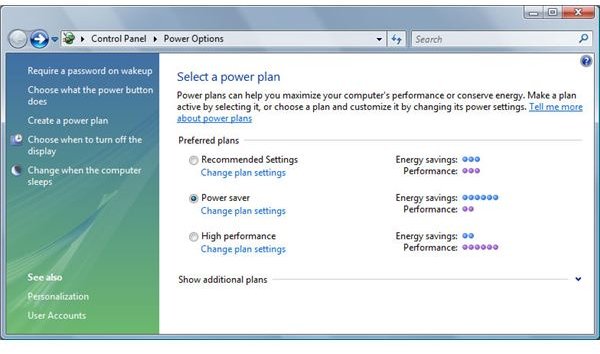Windows Blue Screen After Sleep - When Your Computer Won't Wake Up from Sleep Mode
When I am configuring a PC, one of the first things I often do is turn off the sleep mode in the power settings. I do this because I have seen far too many problems with a Windows computer not waking up after going into sleep mode, such as getting a Windows blue screen after sleep mode is enabled. In this article, I will discuss what sleep mode does and why it sometimes causes problems.
The purpose of putting a Windows PC into sleep mode is to conserve power. On Microsoft’s site, they liken the act to when you pause a DVD player, but I think that is misleading. What happens on your computer is that it saves the current state of your PC and whatever programs are running or files are open. The idea is that when you press a key or hit the power button again, it should load everything back up like it was before it went into sleep mode. Microsoft says it should only take a few seconds, but sometimes it can take as long as a minute, and that’s if it does work at all. This could be an indication that your power supply is going out or overloaded, but it can be disheartening when your computer fails to recover.
Power Options
I am not saying everyone should disable sleep mode on their PC, because it is pretty useful if it works properly. I’ve seen it cause more problems with older computers than newer ones, especially with older versions of Windows like Windows 2000, Windows 98, and even Windows XP. If your own computer has problems coming out of sleep mode, then you might as well disable it because a forced restart means the system won’t log out properly and this can cause problems.
To enable or disable sleep mode on your PC, or to adjust the amount of time before it goes to sleep, you need to go into the Power Options setting in the Control Panel. Just click on Start – Settings – Control Panel – Power Options and click the ‘change plan settings’ link in Windows Vista. On Windows XP, you’ll see drop-down menus for adjusting the timeframe for sleep as well as when to turn off the monitor and hard drive. In Windows 7, the menus can be found in the Control Panel under Power Options in a section called Sleep.
BSOD Issues
If you are getting a Windows blue screen after sleep mode is enabled, then it means your computer is having trouble that is usually hardware-related. It could be that your power supply is going out and the suspended state that is Sleep mode just doesn’t work properly with it. The problem could also have to do with your motherboard and maybe some leaky or puffy capacitors are causing a malfunction when the power drops during sleep mode. Your computer may have some bad RAM or memory. It could also very well be that your hard drive is wearing out and that it can’t handle all the data moved back and forth during sleep and recovery, or perhaps some of the recovery data is stored on a bad sector.
Other Problems
Even if you aren’t getting blue screens, but still having problems with your computer getting stuck coming out of sleep mode, there are several things you can do to help remedy the problem. First, you should defrag your hard drive. This will make it easier for Windows to save and load all the data required to take the computer in and out of sleep mode, plus it’s generally helpful to everything on your computer because it makes the files quicker to access.
Another thing to look at is all the peripherals connected to your machine. I have an iPod Touch and sometimes my PC does weird things when booting up or coming out of sleep mode while the Touch is plugged in via USB. I suspect it has something to do with it wanting to recharge the battery while simultaneously loading and syncing iTunes. Unplug anything you don’t normally use and see if your PC works better after that.
If your problem is related to hardware that is wearing out, then you may have to consider replacing them at some point. Running Windows Update to get all the current software and driver updates always helps to keep the PC running more smoothly. If you can’t find any other problems with your computer besides sleep mode not working, then the easiest solution is to disable sleep mode.
References
- Author’s personal experience in the IT industry.
- Screenshot taken by author.
